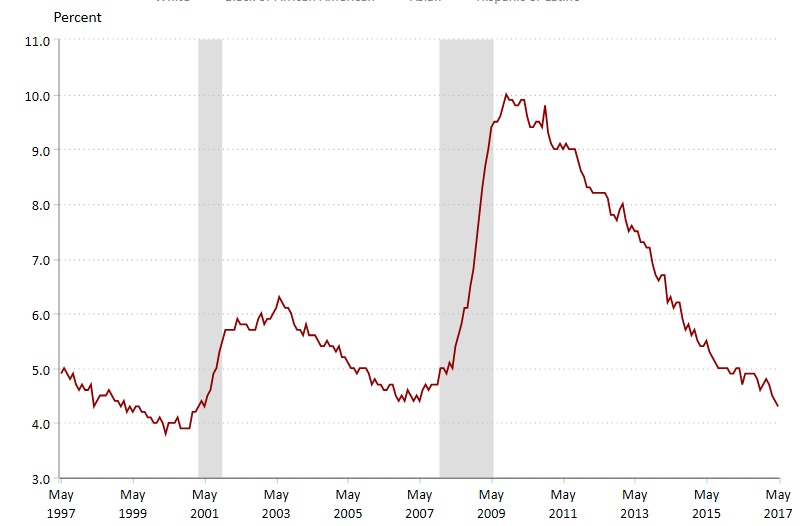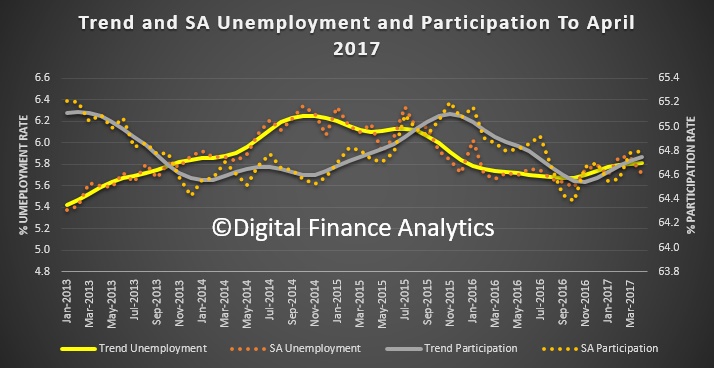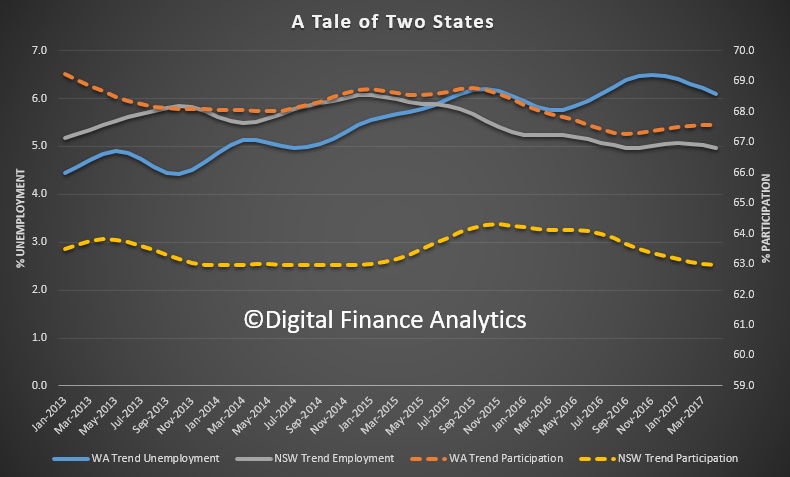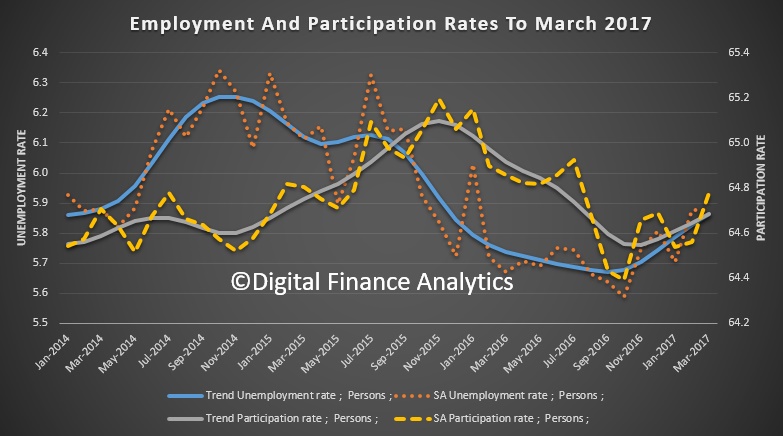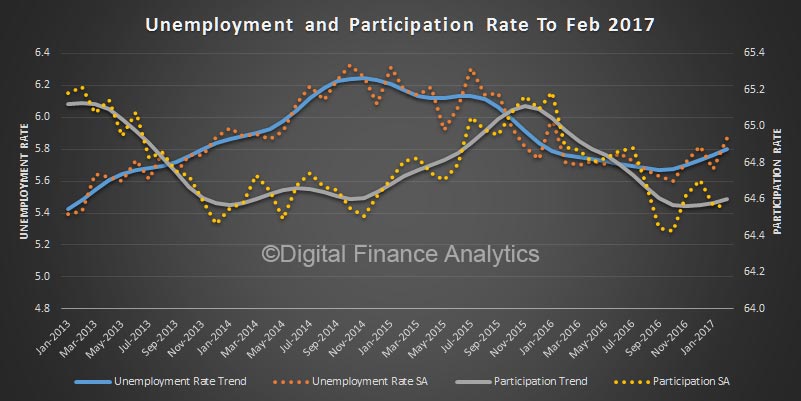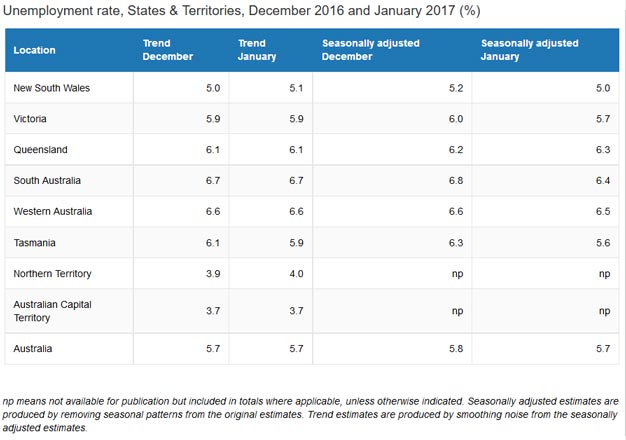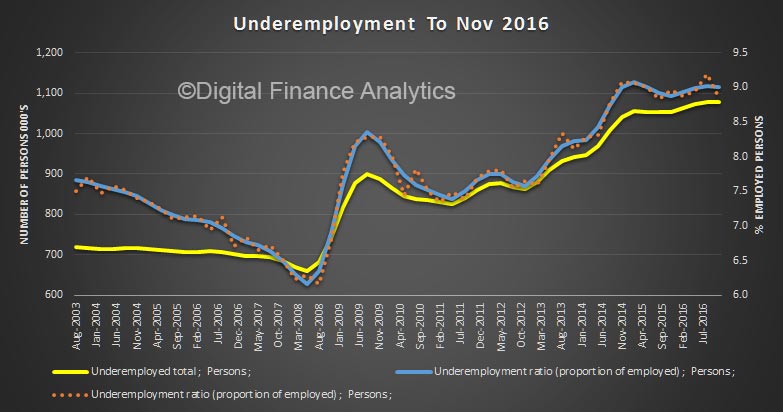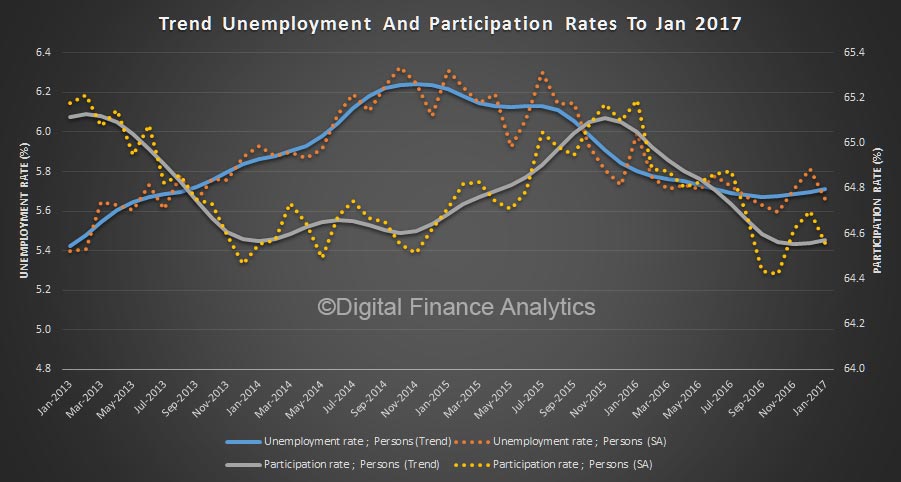According to the US Bureau of Labor Statistics, total nonfarm payroll employment increased by 138,000 in May, and the unemployment rate was little changed at 4.3 percent. Job gains occurred in health care and mining. The labor force participation rate declined by 0.2 percentage point to 62.7 percent.
The unemployment rate, at 4.3 percent, and the number of unemployed persons, at 6.9 million, changed little in May. Since January, the unemployment rate has declined by 0.5 percentage point, and the number of unemployed has decreased by 774,000.
Among the unemployed, the number of job losers and persons who completed temporary jobs declined by 211,000 to 3.3 million in May. The number of long-term unemployed (those jobless for 27 weeks or more) was essentially unchanged over the month at 1.7 million and accounted for 24.0 percent of the unemployed.
The labor force participation rate declined by 0.2 percentage point to 62.7 percent in May but has shown no clear trend over the past 12 months. The employment-population ratio edged down to 60.0 percent in May.
The number of persons employed part time for economic reasons (sometimes referred to as involuntary part-time workers) was little changed at 5.2 million in May. These individuals, who would have preferred full-time employment, were working part time because their hours had been cut back or because they were unable to find a full-time job.
In May, 1.5 million persons were marginally attached to the labor force, down by 238,000 from a year earlier. (The data are not seasonally adjusted.) These individuals were not in the labor force, wanted and were available for work, and had looked for a job sometime in the prior 12 months. They were not counted as unemployed because they had not searched for work in the 4 weeks preceding the survey.
Among the marginally attached, there were 355,000 discouraged workers in May, down by 183,000 from a year earlier. (The data are not seasonally adjusted.) Discouraged workers are persons not currently looking for work because they believe no jobs are available for them. The remaining 1.1 million persons marginally attached to the labor force in May had not searched for work for reasons such as school attendance or family responsibilities.
Establishment Survey Data
Total nonfarm payroll employment increased by 138,000 in May, compared with an average monthly gain of 181,000 over the prior 12 months. In May, job gains occurred in health care and mining.
Employment in health care rose by 24,000 in May. Hospitals added 7,000 jobs over the month, and employment in ambulatory health care services continued to trend up (+13,000). Job growth in health care has averaged 22,000 per month thus far in 2017, compared with an average monthly gain of 32,000 in 2016.
Mining added 7,000 jobs in May. Employment in mining has risen by 47,000 since reaching a recent low point in October 2016, with most of the gain in support activities for mining.
In May, employment in professional and business services continued to trend up (+38,000). The industry has added an average of 46,000 jobs per month thus far this year, in line with the average monthly job gain in 2016.
Employment in food services and drinking places also continued to trend up in May (+30,000) and has grown by 267,000 over the past 12 months.
Employment in other major industries, including construction, manufacturing, wholesale trade, retail trade, transportation and warehousing, information, financial activities, and government, showed little change over the month.
The average workweek for all employees on private nonfarm payrolls was unchanged at 34.4 hours in May. In manufacturing, the workweek also was unchanged at 40.7 hours, while overtime edged up by 0.1 hour to 3.3 hours. The average workweek for production and nonsupervisory employees on private nonfarm payrolls edged down by 0.1 hour to 33.6 hours.
In May, average hourly earnings for all employees on private nonfarm payrolls rose by 4 cents to $26.22. Over the year, average hourly earnings have risen by 63 cents, or 2.5 percent. In May, average hourly earnings of private-sector production and nonsupervisory employees increased by 3 cents to $22.00.
The change in total nonfarm payroll employment for March was revised down from +79,000 to +50,000, and the change for April was revised down from +211,000 to +174,000. With these revisions, employment gains in March and April combined were 66,000 less than previously reported. Monthly revisions result from additional reports received from businesses and government agencies since the last published estimates and from the recalculation of seasonal factors. Over the past 3 months, job gains have averaged 121,000 per month.

